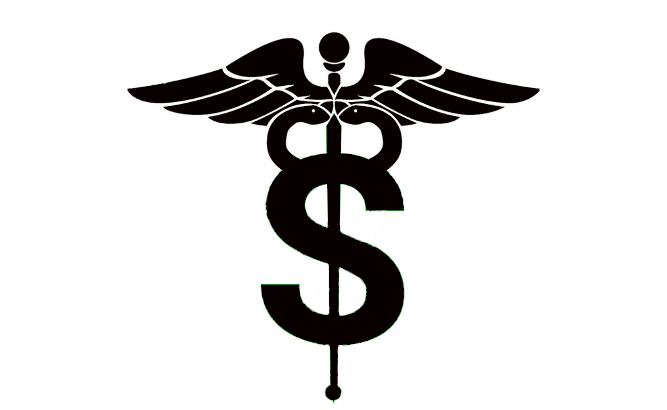2023-02-15
Your Money or Your Life: Patient on $50,000-a-Week Cancer Drug Fears Leaving Behind Huge Medical Debt
After several rounds of treatment for a rare eye cancer — weekly drug infusions that could cost nearly $50,000 each — Paul Davis learned Medicare had abruptly stopped paying the bills.
That left Davis, a retired physician in Findlay, Ohio, contemplating a horrific choice: risk saddling his family with huge medical debt, if he had to pay those bills from the hospital out-of-pocket, or halt treatments that help keep him alive.
“Is it worth bankrupting my family for me to hang around for a couple of years?” Davis pondered. “I don’t want to make that choice.”
How much Davis will end up owing for his care remains unclear. One of the hospitals that has administered the costly drug is appealing Medicare’s initial payment denials. And the family might not even know their total balance until Medicare rejects all the appeals.
But the uncertainty has compounded the stress of living with an aggressive cancer.
Davis, 71, was diagnosed in November 2019 with uveal melanoma, which afflicts eye tissue and is “one of the rarest tumors on the planet,” he said.
The cancer spread from his eye to his liver, which typically proves fatal within a year. He was told a new rare-disease drug called Kimmtrak offered the only hope for prolonging his life.
Approved by the FDA in January 2022 as the “first and only” treatment for metastatic uveal melanoma, Kimmtrak has kept his tumors stable, according to Davis. His oncologist told him he should stay on the drug “until it stops working.” Its manufacturer markets the drug’s power to deliver “6-month improvement in median overall survival.”
Davis said he started taking the medicine last summer at the Arthur G. James Cancer Hospital in Columbus.
The hospital billed a total of $49,367.70 for his intravenous chemotherapy administered on Sept. 13, 2022. The charge for the drug came to $47,838; the rest covered fees for lab work and administering the drug. Medicare paid the provider $11,668.86 for those services, according to Medicare records explaining his benefits.
His subsequent treatments at the Columbus hospital were covered, too, according to Medicare billing statements Davis reviewed.
But things changed after he transferred his care to a hospital in Findlay in October to spare his wife, Jane, from driving him 100 miles each way to weekly appointments in Columbus.
Medicare has denied Kimmtrak coverage on claims submitted by Blanchard Valley Health System in Findlay, Davis said, pitching him into an agonizing dispute with hundreds of thousands of dollars in medical bills at stake.
After a KHN reporter contacted Blanchard Valley, the hospital connected Davis with a patient relations liaison, who is working to resolve the billing problem. Davis said last week that Medicare apparently rejected the claims because the Findlay hospital mistakenly billed for using Kimmtrak to treat a different cancer, for which its use is not approved.
Davis said the patient relations liaison told him it might take at least 45 days to straighten out the bill, but the hospital would not dun him, even if it lost the appeal.
Meanwhile, the charges for Kimmtrak “are in limbo,” Davis said.
Amy Leach, the hospital’s director of public relations, said she could not comment on Davis’ case, but in an email wrote: “Blanchard Valley Health System is committed to ensuring that accurate billing occurs and we work with our patients to promptly resolve any concerns.”
Stacie Dusetzina, a health policy and drug pricing expert at Vanderbilt University Medical Center, said Davis is right to worry.
“I hope the hospital will fix this for him and that they are communicating with him about it,” she said.
Sebastien Desprez, a spokesperson for Oxfordshire, England-based Immunocore, which manufactures Kimmtrak, said its list price was $19,229 per weekly dose. He said the drug’s approval by the FDA shows “there is value for patients.”
Cancer drug prices “are outrageous,” said Dr. Hagop Kantarjian, who chairs the Department of Leukemia at MD Anderson Cancer Center in Texas. Kantarjian said the prices manufacturers charge for cancer drugs have soared from less than $10,000 annually in the late 1990s to more than $200,000 annually today.
And that’s not even the full cost. Dusetzina said hospitals often hugely inflate the price of drugs in the bills they issue “so that if someone doesn’t pay, [the hospital] can write it off.”
Merith Basey, executive director of Patients for Affordable Drugs, an advocacy group, said no ordinary person can handle the price of these drugs.
“It’s simple: Drugs don’t work if people can’t afford them … no one should be poor because they are sick or be sick because they are poor,” she said.
This is not Davis’ first time staring down a supersized medical bill.
Davis and his daughter, Elizabeth Moreno, were the subject of the 2018 debut article in the KHN-NPR “Bill of the Month” series over her $17,850 bill for a urine test.
Davis wound up paying a Texas lab $5,000 to settle that bill, which private insurers said should have cost a hundred dollars or less. Davis spoke at a May 2019 White House event to support legislation to crack down on “surprise” medical bills.
But at least he knew where he stood with the urine testing bill. Now he’s facing escalating costs of his cancer care without knowing how it will affect his family’s finances.
“How do you make an informed choice if you have no information?” Davis asked.
KHN (Kaiser Health News) is a national newsroom that produces in-depth journalism about health issues. Together with Policy Analysis and Polling, KHN is one of the three major operating programs at KFF (Kaiser Family Foundation). KFF is an endowed nonprofit organization providing information on health issues to the nation.
Subscribe to KHN’s free Morning Briefing.

